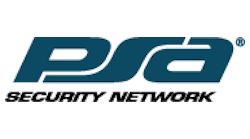This article originally appeared in the December 2022 issue of Security Business magazine. When sharing, don’t forget to mention Security Business magazine on LinkedIn and @SecBusinessMag on Twitter.
The pace of modern business is faster than ever, and staying ahead of the curve can make the difference between a thriving organization and one on the edge of obsolescence. Information is the key to unlocking this potential, but how?
Most businesses have a wealth of information at their disposal. Access to information is rarely the roadblock. The business that thrives is not the one with the most information – it is the one with the right information at the right time and in the right place!
Acquiring business information costs money. You must pay to collect, compile, process, summarize, and even sometimes explain it. Throw in an expensive ERP or CRM system and costs can skyrocket. Information should be treated just like any other resource you manage. There is a cost and benefit for the effort and reward.
The Evolution of Internal Information Sharing
When a company is small, one person could keep up with all the information needs. The few employees of the company only needed to listen to the leader and follow instructions. Others could decern the correct course of action with the help of the leader. Information flow was restricted at the top, and this worked. When an organization grows, that same leader starts to get in the way. Opportunities are missed because decisions are made too far from the value stream of the company. This means it is time to start managing the information flow.
When companies reach this precipice, they often go one of three directions. One way is to keep the information at the top, which may not be feasible for a growing company.
Another way is to share as much information as possible – which sounds logical but can cause as many problems as it solves, because managers and employees are often required to digest, absorb, and react to information that may be irrelevant or misunderstood. Unnecessary information provided to managers and employees can distract, confuse, and even frustrate. Even a small company can accumulate millions of dollars of profits, but employees who have access to this information often want to know where their share is – not knowing the total commitments the organization is obligated to. Oversharing information can create its own obstacles.
The third, and correct direction, occurs when the leader understands what information is needed for each of the key functions within the company. A department leader may need access to the spending of the department but does not need access to another manager’s department. It may be useful for the leadership team to have access to the success ratios of other managers, but not the details of those success ratios. Peer pressure is a useful tool after all, but oversharing is a distraction. Knowing what information is needed to support your company’s value proposition by function and department is key.
How to Share Information
Once you have a handle on the value stream and the information needed to support that value, it is time to start sharing. Good information should be digestible by the intended recipient in a few minutes or less. “Eye charts,” data tables, and small fonts are not what your company needs.
A good rule of thumb is to keep the information sharing to one page, with large fonts and plenty of white space. Superficial information will be overlooked most of the time, so keep it simple. When additional information is required, follow up with a discussion or meeting, not with more reports.
When the right people have the right information, they will make the right decisions. Your company will grow, your costs will be manageable, and everyone will enjoy in the success. Knowing your business and its value is the key to knowing what information should – and should not – be shared. Manage this information flow and you will enjoy success; master it and the sky is the limit!
Allen Riggs IS CFO of PSA Security Network. Request more info about PSA at www.securityinfowatch.com/10214742.




